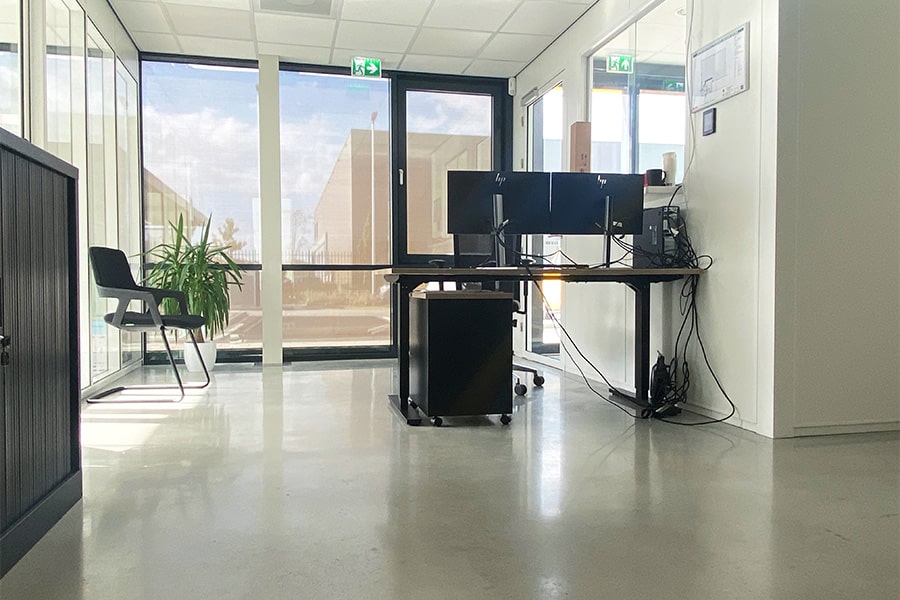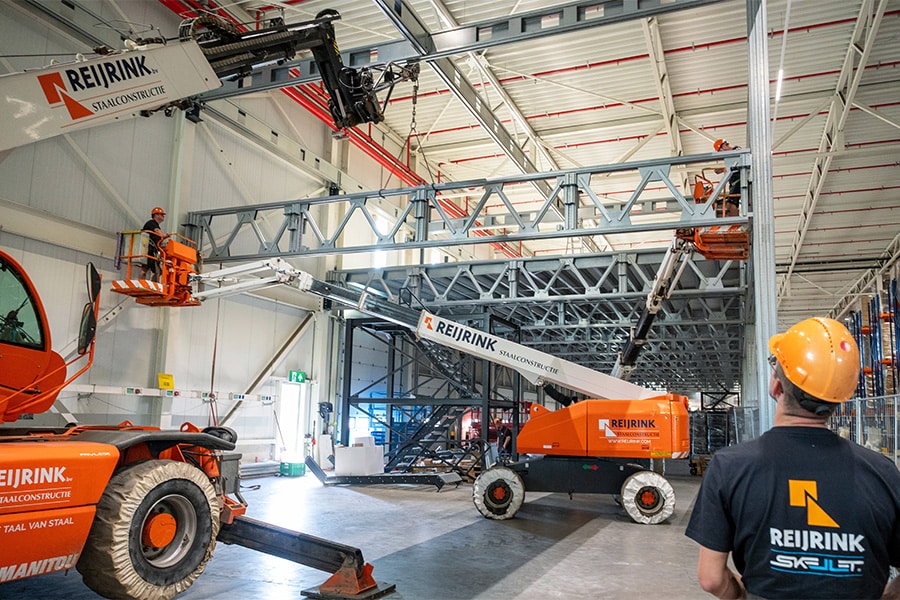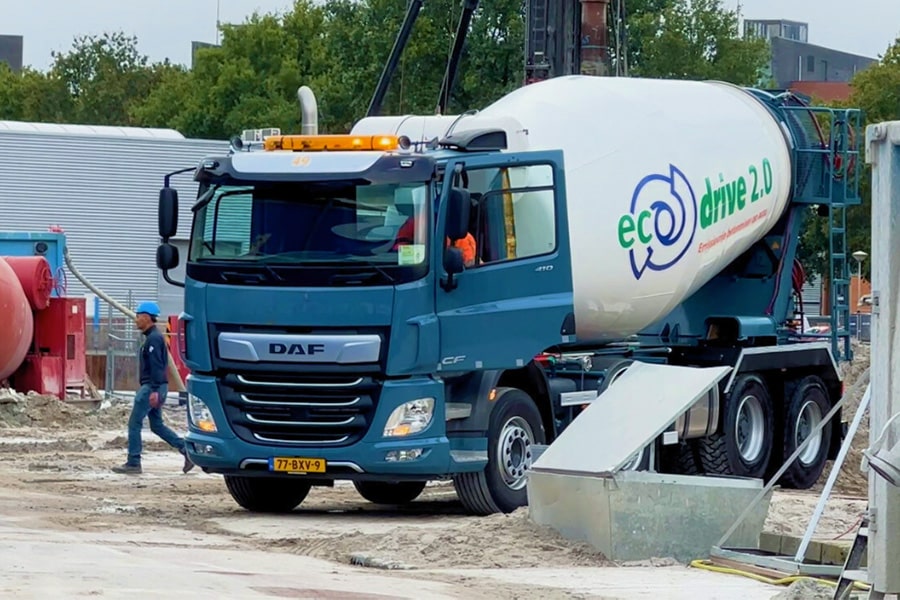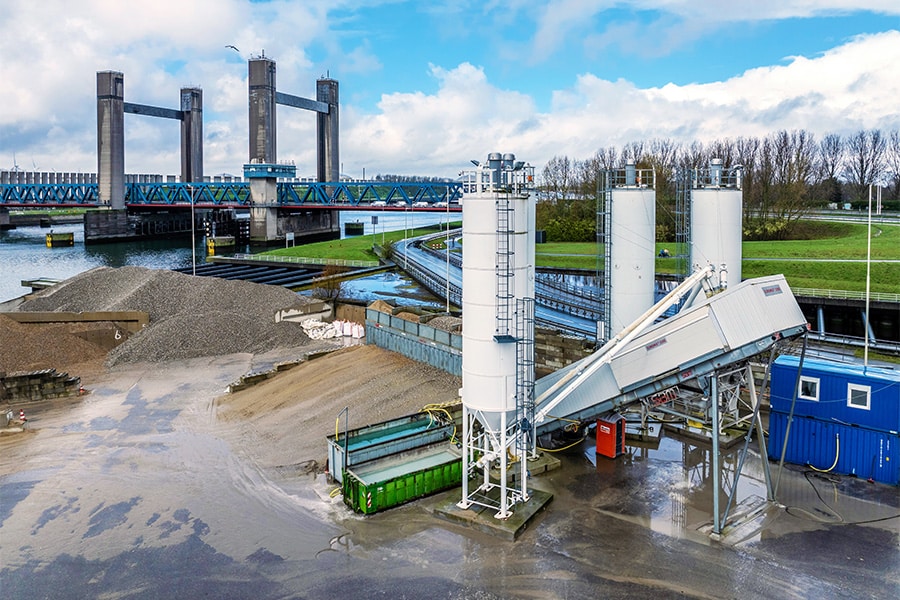
Sustainable concrete bike path graces Apeldoorn municipality
That may be taken literally and figuratively. Not only has the new bicycle path at Krimweg and Spoekweg in Hoenderloo become very beautiful, it has also been created with sustainable concrete. And that is a credit to the municipality of Apeldoorn, which is a leader in the search for sustainable solutions.
Text | Jan Mol Image | Concrete House
We talk about this sustainable and circular bike path with John Assink, specialist in roads and artworks at the Municipality of Apeldoorn. "On behalf of the municipality, I may award the contracts for this type of work, in the role of budget holder," he opens the conversation.
Core group focuses on circularity
"Apeldoorn is always looking for sustainable opportunities. Since last year there has been a core group working on circularity. In the broadest sense of the word by the way, they are even looking at recycling work clothes," Assink said. The bike path in question was previously made of asphalt and intended as a recreational bike path. "In 2010, this bike path was transferred to the municipality of Apeldoorn from the recreation board. It needed to be renovated, so we saw a great opportunity to tackle this as sustainably as possible."
From project De Parken in Apeldoorn, a lot of concrete slab was released at that time. "De Parken is located as a neighborhood in the center of Apeldoorn. The roadway there was made of concrete slabs, these were being pushed up by tree roots. Consequently, a new road had to be built. From a circular point of view, we first looked at whether we could reuse the old concrete slabs, but the underside turned out to be erratic. It was not flat enough for reuse, so we decided to break up the concrete slabs and granulate them. We reused this granulate in the new bike path."

John Assink, specialist in roads and structures at the Municipality of Apeldoorn.
Good consultation in the construction team is half the battle
"The construction team for the bike path consisted of different companies. Because of the composition of the concrete mix, we knew we would need more paving time. We wanted to be ready for the big cycling season and knew this would involve a very tight schedule. Thanks to good consultation in the construction team, we were able to make everything happen. Even the additional measures to protect the unpaved concrete from outside influences were devised in the construction team, such as installing fence wire to keep fauna away from the unpaved bike path."
For the core group, the bike path is a good learning experience. "We are just continuing on the same footing," Assink said. "Now we are working on the Imbosweg bicycle path, which also incorporates as much recycled, local concrete as possible. Whether we'll make it with 100% Apeldoorn's concrete we don't know yet, but in any case there will be regionally recycled concrete in it. After all, we have to think about the carbon footprint. We bring a lot of concrete that comes from demolitions to the crusher, to be able to really give the resulting raw material the predicate 'locally extracted'."
Also concrete granules in concrete tiles
Project De Parken also benefits from sustainable concrete, and it does so in the form of concrete tiles for sidewalks, which incorporate Apeldoorn's granulate. "A company from the area buys this for us, based on our wishes and requirements," Assink explains. "We want to work future-proof. We are currently working on a bridge renovation. There the interesting question arises of how circular we can deal with it. Can we do it with concrete? Or do we do it with wood? The nice thing about the discussion about this is that within the Municipality of Apeldoorn it has become normal thinking to see if it can be circular. That is why we are carefully mapping out what kind of recyclable materials are released within the municipality and region, so that we can look in time at where to put them. A good example is that we were able to reuse concrete stone from a roadway in the construction of parking lanes. Reuse is just as important to us as recycling. We always look functionally at recycling or repurposing materials from demolition."

"Because of the composition of the concrete mix, we knew we would need more hardening time," he said.
Materials Passport
Assink and his team are currently developing a "materials passport. He explains: "We document everything in advance, for example by registering the composition of asphalt in advance. That way we know later which materials are in it when it comes to demolition. In this way we flawlessly map out what materials are present in our area. Registering at the front of the chain means facilitating at the back of the chain."
In this way, Apeldoorn is sending a positive message and showing that anything is possible. "As long as the noses are in the same direction and you don't lose sight of the goal, anything is possible. Apeldoorn is big enough to generate its own mass of raw materials and small enough to control this flow to its own ends."
Concrete House
Concrete House is the trade association of the cement and concrete industry. This industry is the largest supplier to the construction industry. By sharing knowledge, Betonhuis responds to current issues such as circular construction, climate adaptation and sustainable construction. Want to know more? Concretehouse.co.uk



